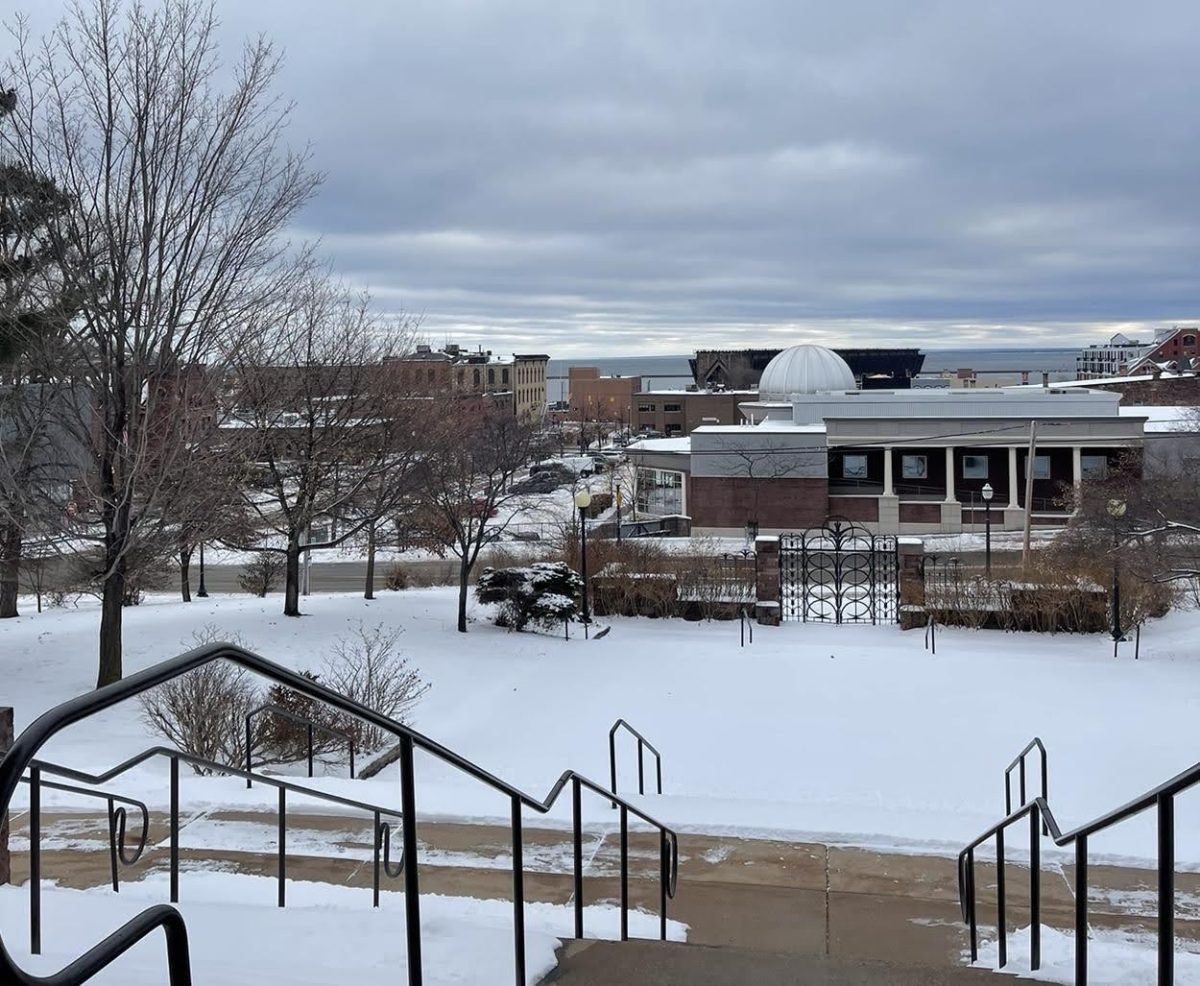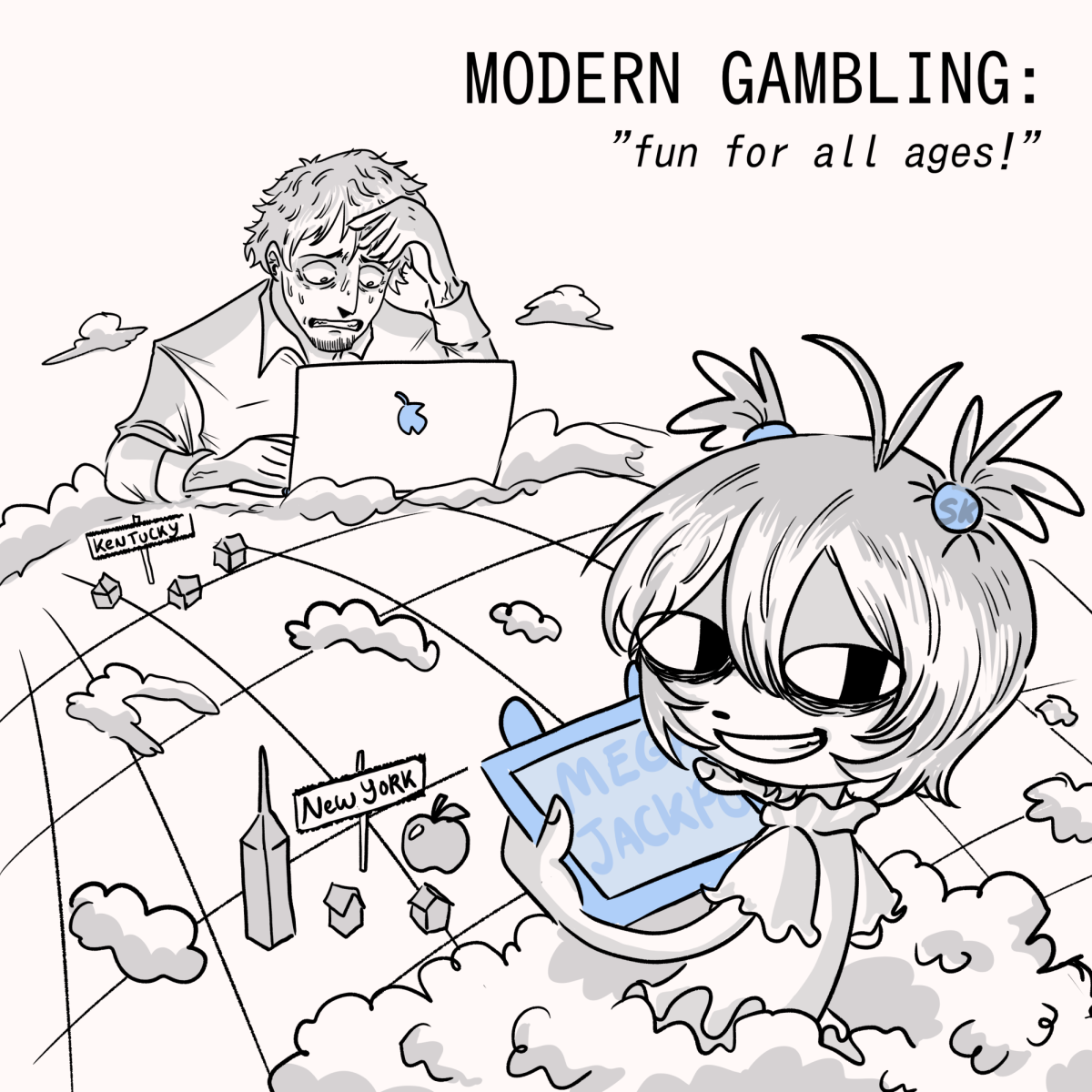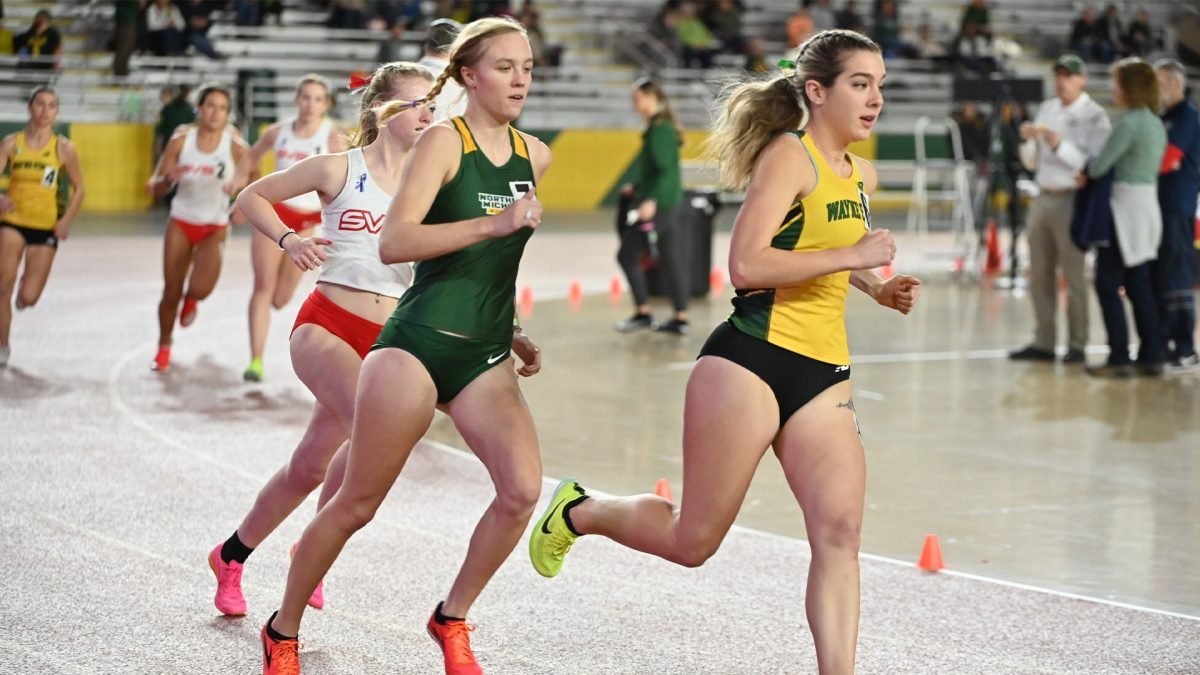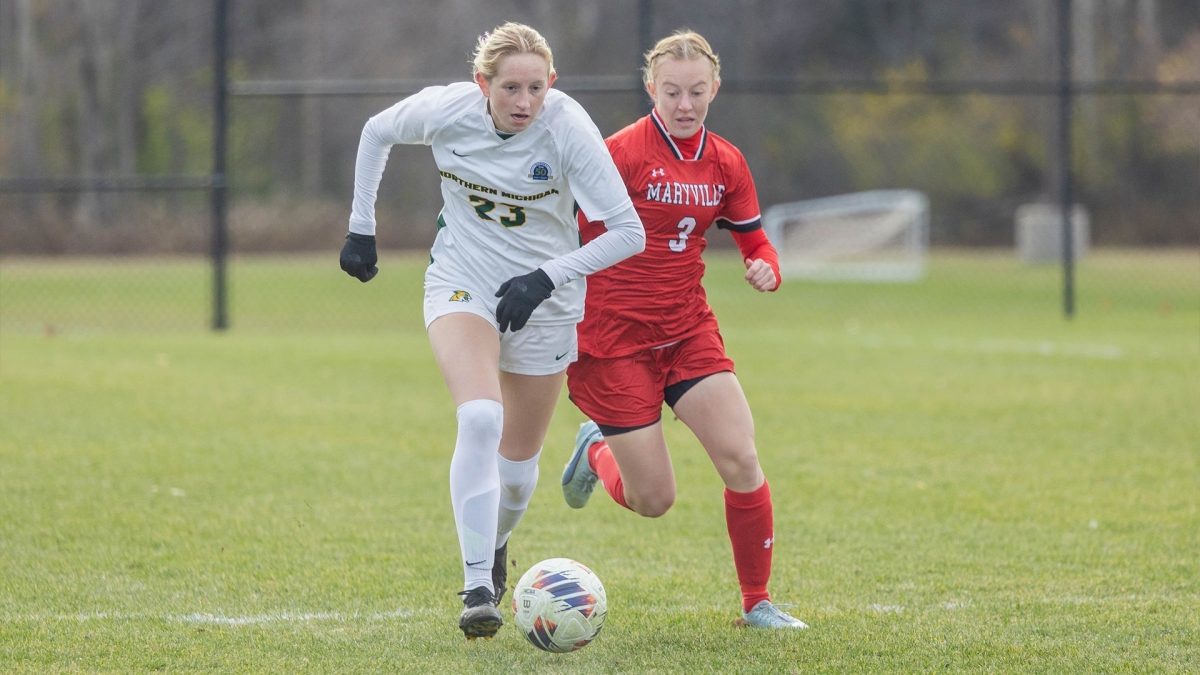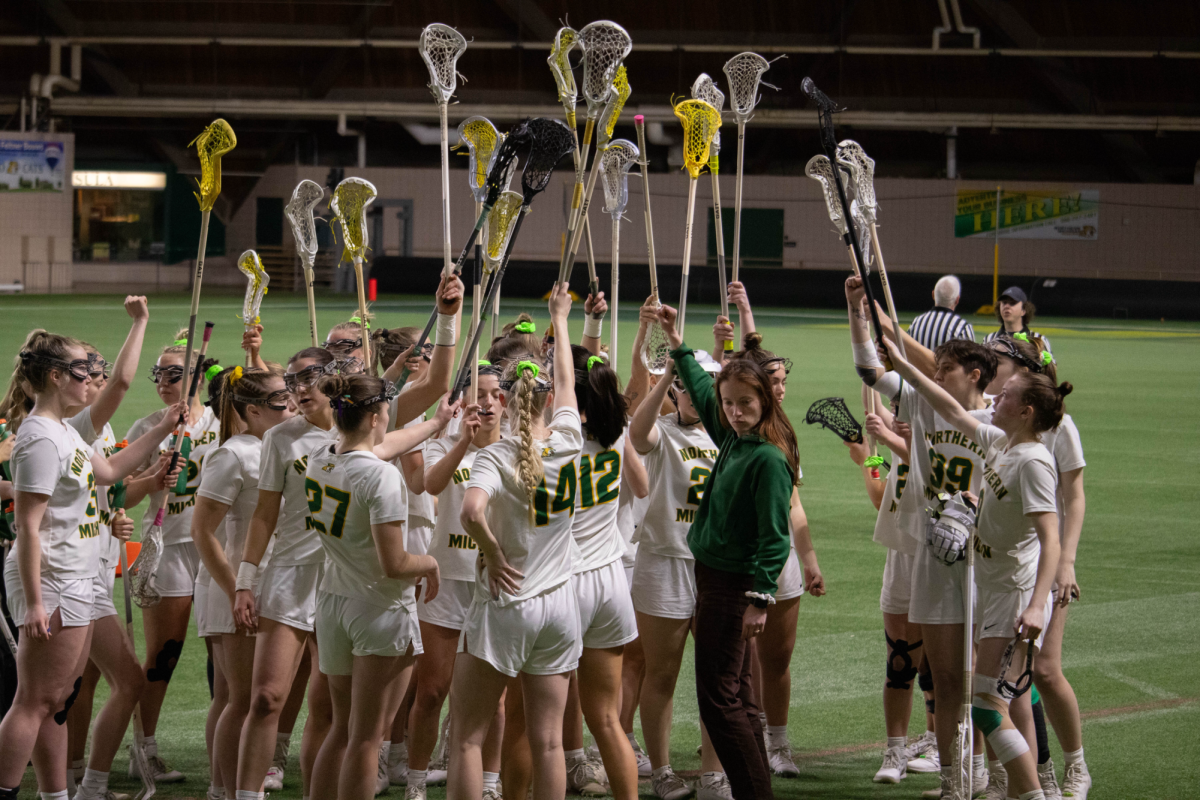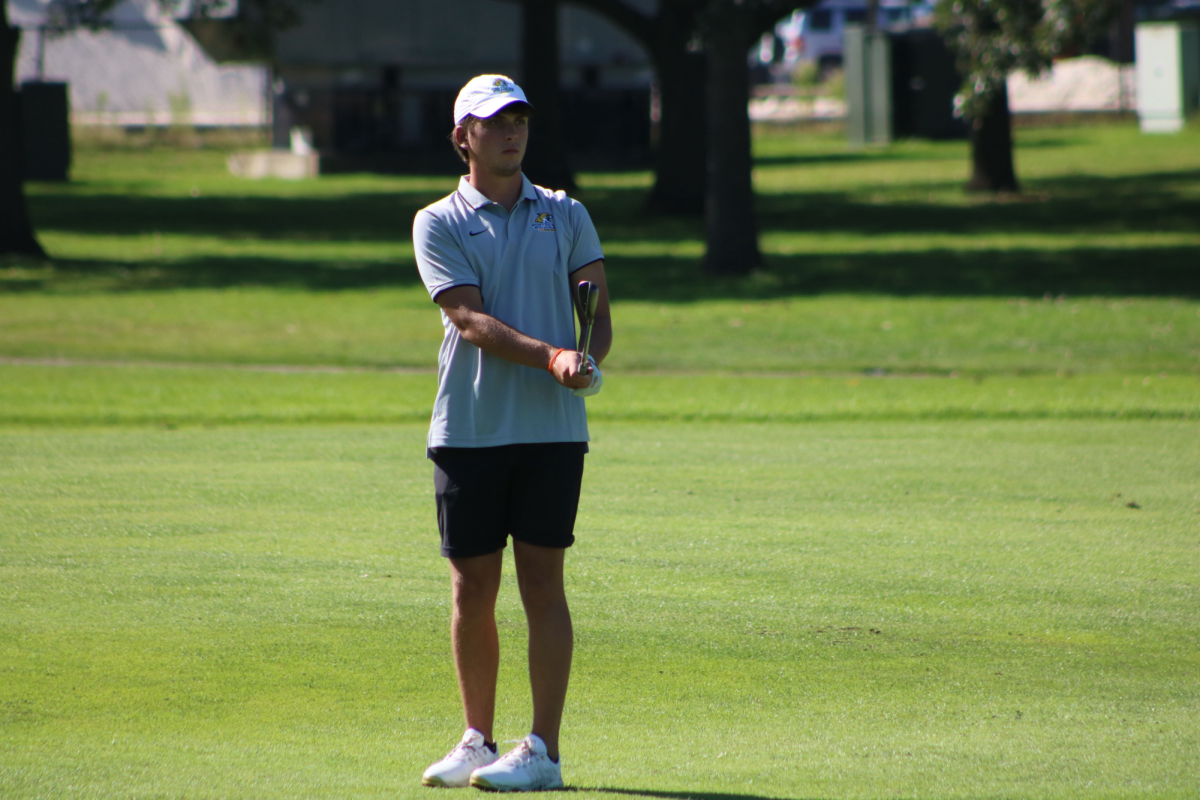NMU student Nicole Mitchell walked along the sidewalk on her way to the main entrance of the University Center. It was early on a February morning 2010 and a light layer of powder snow covered the slick sidewalk. Unaware of the slippery surface, she lost her balance and fell on her elbow, breaking a bone in her arm. Mitchell wore a cast on her arm for the next three weeks and experienced occasional numbness from temporary nerve damage for five months.
“The cast went up past my elbow, so I couldn’t really move my arm at all, which made everything more difficult,” she said.
NMU’s Public Safety Department keeps a record of all reported personal injuries. From January 2008 to October 2010, Public Safety received 33 personal injury reports due to icy campus sidewalks and parking lots. Although not an overwhelming total, this is only the number of falls reported under Public Safety’s accident reporting policy.
Among the reported falls was a spill taken by English professor Kia Richmond. She fell three times during the winter 2010 semester, but Richmond injured her knee during the worst fall outside Gries Hall. After subsequently reinjuring her knee, she had to have surgery last summer. Richmond tries to use covered walkways and she wears winter boots when moving between on-campus buildings and is cautious about taking another tumble.
“It’s very frustrating. This is not the first year I have fallen,” she said. “It’s difficult as professors. Just like students, we have to move from building to building [during the winter].”
Heavy snow is an accepted part of living in the Upper Peninsula, where the annual average snowfall for Marquette is 141 inches. Northern officials say they take the large task of snow removal seriously.
“We don’t control the weather. We do a pretty good job maintaining the sidewalks and the streets and the parking lots, [but] it’s a pretty big job,” said James Bradley, manager of the NMU Risk and Insurance Management Department.
NMU’s responsibility for injuries and falls depends on who takes the spill. For students and campus visitors, Northern generally has no legal responsibility.
“Our responsibility is to clear the sidewalks, but we don’t have any legal responsibility if somebody slips and falls,” Bradley said.
Mitchell learned that the hard way last February. After her fall, she went to the Vielmetti Health Center, which she said directed her to Human Resources to discuss responsibility for treatment costs.
“They told me the university is only responsible for shoveling, that there was nothing they could do, so I would have to take care of the doctor bills on my own,” Mitchell said.
Mitchell’s medical costs came to about $1,600 and the injury was an inconvenience. She couldn’t work for two weeks because she washed dishes and couldn’t get the cast wet.
However, Northern would take responsibility for a student’s injury if there was a failure to provide clear walkways, Bradley said.
“If somebody can show that the University was grossly negligent—that we really did something that we knew could injure a student—[the university would be responsible], but the likelihood of that happening is not very good,” said Bradley.
NMU faculty and staff have greater recourse. If a University employee falls and is injured at work, he or she can receive workers’ compensation. Bradley explained that with an employee injury it does not matter if the University is at fault or not–job related is the only criteria. Margaret Schwalm, the benefits assistant for NMU Human Resources said workers’ compensation cases involving slips and falls occur every year. Although the majority of cases come from dining employees, there are on average seven or eight workers’ compensation cases involving icy sidewalks or parking lots annually.
“I know after an ice storm, I’m going to get several reports,” Schwalm said.
Public Safety’s accident reporting policy requires faculty, staff, students, or visitors to report all personal injuries requiring treatment other than self-administered first aid to a supervisor, responsible faculty member or Public Safety. A University Incident Report must then be prepared within 24 hours of the injury.
Northern’s facilities and grounds department is responsible for maintaining NMU’s 3.6 miles of roadways and 13.95 miles of sidewalks. Attention focuses first on the primary routes which receive the most traffic before covering the rest of campus. On typical snowfall days, clearing begins about 5 a.m. with the academic and administrative buildings in anticipation of people coming to work and class, said Jim Thams, associate director of engineering and planning and grounds.
Lesser priority areas like the on-campus apartments and the Dome parking lots see later attention.
“There are some sidewalks that we don’t clear and it comes down to time: We have seven guys, that’s all we have,” Thams said.
To combat the slick conditions, salt or sand is spread on all plowed sidewalks. If the temperature is above 20 degrees, salt is used and for colder temperatures, a mixture of sand and calcium chloride is spread. Approximately 200-tons of salt are used to fight slick conditions on campus each winter, said Thams.
Students and staff can do more to address problematic areas than simply sharing stories of winter falls with friends. If someone on campus comes across hazardous conditions, he or she can notify Public Safety, which will immediately contact the grounds department.
“The more people out there that can see a problem, the better,” Thams said.




